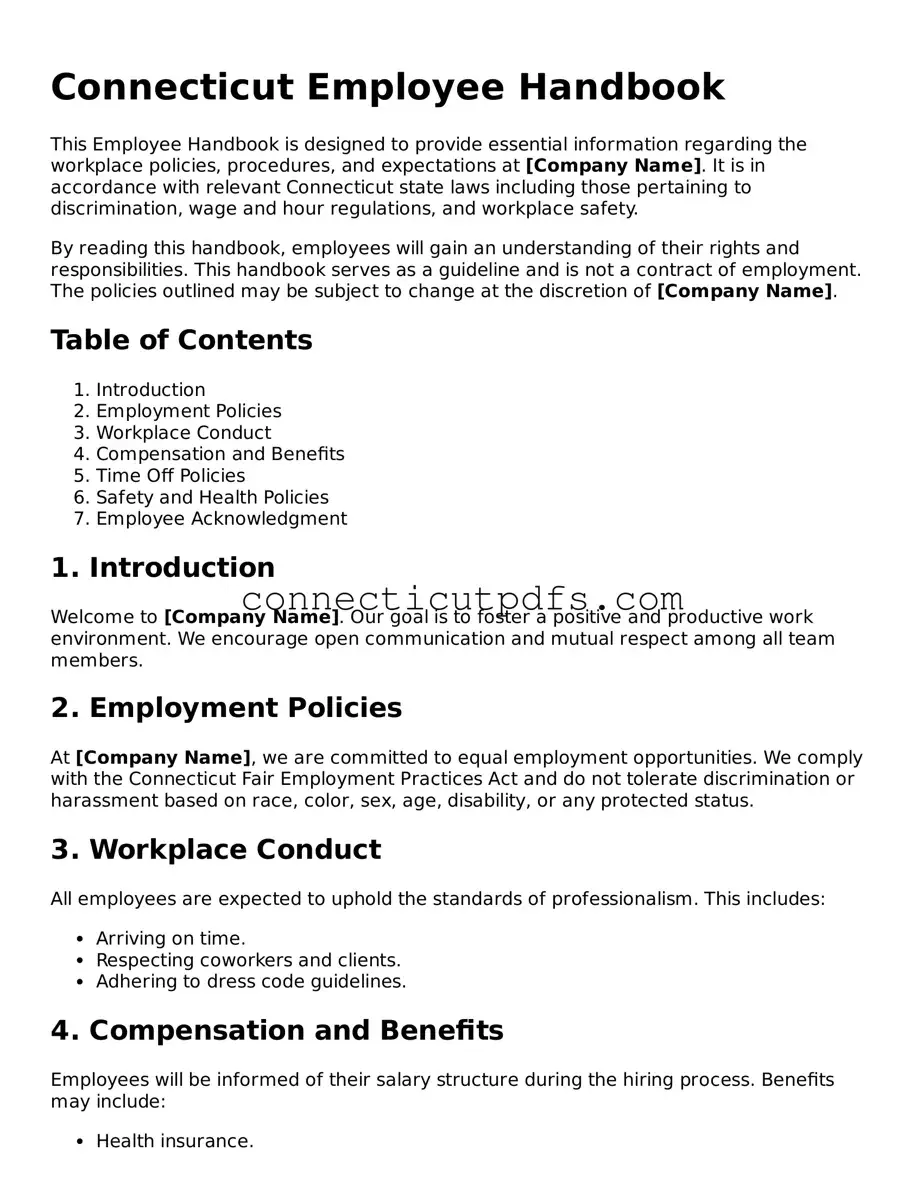Connecticut Employee Handbook
This Employee Handbook is designed to provide essential information regarding the workplace policies, procedures, and expectations at [Company Name]. It is in accordance with relevant Connecticut state laws including those pertaining to discrimination, wage and hour regulations, and workplace safety.
By reading this handbook, employees will gain an understanding of their rights and responsibilities. This handbook serves as a guideline and is not a contract of employment. The policies outlined may be subject to change at the discretion of [Company Name].
Table of Contents
- Introduction
- Employment Policies
- Workplace Conduct
- Compensation and Benefits
- Time Off Policies
- Safety and Health Policies
- Employee Acknowledgment
1. Introduction
Welcome to [Company Name]. Our goal is to foster a positive and productive work environment. We encourage open communication and mutual respect among all team members.
2. Employment Policies
At [Company Name], we are committed to equal employment opportunities. We comply with the Connecticut Fair Employment Practices Act and do not tolerate discrimination or harassment based on race, color, sex, age, disability, or any protected status.
3. Workplace Conduct
All employees are expected to uphold the standards of professionalism. This includes:
- Arriving on time.
- Respecting coworkers and clients.
- Adhering to dress code guidelines.
4. Compensation and Benefits
Employees will be informed of their salary structure during the hiring process. Benefits may include:
- Health insurance.
- Retirement plans.
- Paid time off.
5. Time Off Policies
Employees are entitled to various forms of leave including:
- Sick leave.
- Paid vacation.
- Family and medical leave as specified under Connecticut law.
6. Safety and Health Policies
[Company Name] prioritizes a safe working environment. Employees must adhere to all safety guidelines and report any hazards immediately.
7. Employee Acknowledgment
All employees must sign an acknowledgment form indicating they have read and understood the policies outlined in this handbook. The acknowledgment form will be kept in the employee’s personnel file.
For any questions or clarifications regarding this Employee Handbook, please contact your supervisor or the Human Resources department.
